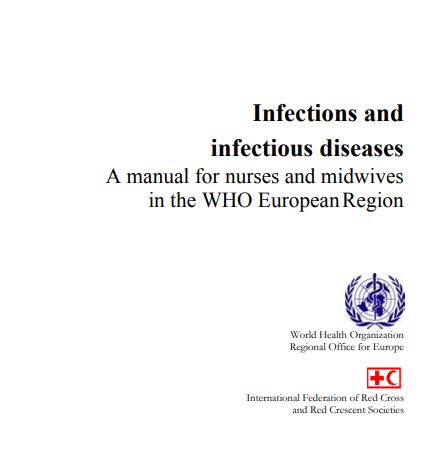‘Cytology Genetics And Infectious Diseases’ PDF Quick download link is given at the bottom of this article. You can see the PDF demo, size of the PDF, page numbers, and direct download Free PDF of ‘Cytology Genetics And Infectious Diseases’ using the download button.
Cytology Diagnosis For Infectious Diseases Book PDF Free Download

Identification of Pathogens and Recognition of Cellular Reactions
Defense mechanisms against infection
Defense mechanisms against infection are categorized into two types: nonspecific and specific. Both types cooperatively function as an effective anti-infection system. Varied inflammatory cells are involved in the processes
2.1 Types of inflammatory cells
Types of inflammatory cells and their properties are briefly summarized in Table 1. The function of the cells and their proliferative and migratory activity are shown.
| Cell type | Function | Proliferative activity | Migratory potential |
|---|---|---|---|
| Granulocyte | |||
| Neutrophil | Phagocytosis | None | Migratory |
| Eosinophil | Allergy, anti-helminth function | None | Migratory |
| Basophil | Histamine production | None | Migratory |
| Mast cell | Histamine production | Proliferative | Migratory |
| Monocyte | Phagocytosis | Proliferative | Migratory |
| Macrophage | Phagocytosis, granuloma reaction | Proliferative | Migratory |
| B-lymphocyte | Humoral immunity | Proliferative | Migratory |
| T-lymphocyte | Cellular immunity/helper activity | Proliferative | Migratory |
| NK cell | Innate immunity | Proliferative | Migratory |
| Plasma cell | Antibody production | None | None |
| Dendritic cell | Antigen presentation | Proliferative | None |
Table 1.
Inflammatory cells and their properties.
Representative light microscopic and electron microscopic features of the inflammatory cells are illustrated in Figures 1 and 2.
Of note is that cytokines mediate intercellular communication with which the immune cells talk to each other [11]. Cytokines include interferons, interleukins, chemokines, lymphokines, and tumor necrosis factors.
Figure 1.
Types of inflammatory cells (may-Giemsa). a: Three kinds of granulocytes (from left to right: Basophil, neutrophil, and eosinophil) are seen in the bone marrow smear. b: Small lymphocyte, c: Plasma cell, d: Hemophagocytic (activated) macrophage.
Compare the cytoplasmic granules in the granulocytes. The cytoplasm of the small lymphocyte is scanty, and the plasma cell contains basophilic cytoplasm with a prominent Golgi area. The macrophage actively phagocytizes red cells and platelets.
Figure 2.
Electron microscopic appearance of inflammatory cells. a: Neutrophil (left) and lymphocyte (right), b: Eosinophil, c: Basophil, d: Two plasma cells in the small bowel mucosa, e: Activated macrophage in soft tissue.
The lymphocyte has an indented nucleus, while the granulocytes possess segmented nuclei.
The cytoplasmic granules feature the respective granulocytes: Small-sized granules in the neutrophil, large crystalline granules in the eosinophil, and large rounded granules often with a fingerprint image in the basophil.
The plasma cells contain a round nucleus with peripherally condensed heterochromatin and the cytoplasm rich in the rough endoplasmic reticulum.
The large-sized macrophage possesses an ameboid cytoplasmic process and several electron-dense lysosomal granules. Bars indicate 1 μm.
| Author | – |
| Language | English |
| No. of Pages | 282 |
| PDF Size | 1.85 MB |
| Category | Health |
| Source/ Credits | euro.who.int |
Related PDFs
BD Chaurasia General Anatomy PDF
Cytology Genetics And Infectious Diseases Book PDF Free Download